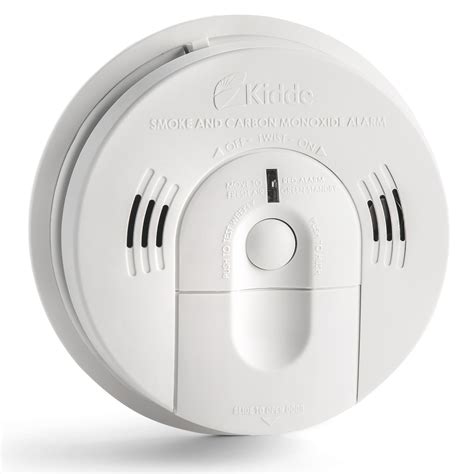Carbon monoxide (CO) is an odorless, colorless gas that can be fatal if inhaled. CO is produced by the incomplete combustion of fuels, such as natural gas, propane, and gasoline. It can be found in homes, businesses, and vehicles.

CO detectors are designed to warn people of the presence of CO so that they can take steps to protect themselves. Kidde is a leading manufacturer of CO detectors, and its products are known for their reliability and accuracy.
How Long Do Kidde CO Detectors Last?
Kidde CO detectors have a lifespan of 5 to 7 years. After this time, the detector’s sensor may begin to degrade, and it may not be able to detect CO as effectively. It is important to replace your Kidde CO detector every 5 to 7 years to ensure that it is working properly.
Signs That Your Kidde CO Detector Needs to Be Replaced
There are several signs that may indicate that your Kidde CO detector needs to be replaced:
- The detector is more than 5 to 7 years old.
- The detector is chirping or beeping, even after you have replaced the batteries.
- The detector has been exposed to smoke, dust, or other contaminants.
- The detector has been damaged.
How to Replace Your Kidde CO Detector
Replacing your Kidde CO detector is a simple process. Follow these steps:
- Turn off the power to the detector.
- Remove the old detector from the ceiling or wall.
- Install the new detector in the same location.
- Turn on the power to the detector.
Kidde CO Detector End: What to Do If Your Detector Alarms
If your Kidde CO detector alarms, it is important to take action immediately. Evacuate the building and call 911. Do not re-enter the building until the fire department has declared it safe.
Common Mistakes to Avoid When Using Kidde CO Detectors
There are several common mistakes that people make when using Kidde CO detectors. Avoid these mistakes to ensure that your detector is working properly:
- Do not install the detector in a dead-air space. Dead-air spaces are areas where air does not circulate, such as closets or under beds. CO can accumulate in dead-air spaces, and the detector may not be able to detect it.
- Do not paint the detector. Paint can clog the detector’s sensor, and it may not be able to detect CO.
- Do not clean the detector with harsh chemicals. Harsh chemicals can damage the detector’s sensor, and it may not be able to detect CO.
- Do not ignore the detector’s alarms. If your detector alarms, it is important to evacuate the building and call 911.
Benefits of Using Kidde CO Detectors
Using Kidde CO detectors can provide several benefits, including:
- Peace of mind. Knowing that you have a CO detector in your home can give you peace of mind. You can rest assured that you and your family are protected from the dangers of CO poisoning.
- Early warning. CO detectors can provide early warning of the presence of CO. This can give you time to evacuate the building and call 911 before CO levels become dangerous.
- Protection for your family. CO poisoning can be fatal, especially for children and the elderly. CO detectors can help to protect your family from this danger.
Conclusion
Kidde CO detectors are an important safety device that can help to protect you and your family from the dangers of CO poisoning. By following the tips in this article, you can ensure that your Kidde CO detector is working properly and that you are taking the necessary steps to protect yourself from CO.
Additional Information
- For more information on CO detectors, visit the website of the National Fire Protection Association (NFPA): https://www.nfpa.org/Public-Education/Fire-causes-and-risks/Carbon-monoxide/Understanding-carbon-monoxide
- To find a Kidde CO detector, visit the website of Kidde: https://www.kidde.com/home-safety/en/us/carbon-monoxide-detectors/
- For more information on CO poisoning, visit the website of the Centers for Disease Control and Prevention (CDC): https://www.cdc.gov/co/default.htm
Tables
Table 1: Types of Kidde CO Detectors
| Type | Description |
|---|---|
| Plug-in | Plugs into a standard electrical outlet |
| Battery-operated | Uses batteries to operate |
| Hardwired | Connected to the home’s electrical system |
Table 2: Where to Install Kidde CO Detectors
| Location | Number of Detectors |
|---|---|
| Every bedroom | 1 |
| Outside every sleeping area | 1 |
| On every level of the home | 1 |
Table 3: Signs of CO Poisoning
| Symptom | Description |
|---|---|
| Headache | Dull, throbbing pain in the head |
| Nausea | Feeling of being sick to the stomach |
| Dizziness | Feeling lightheaded or faint |
| Confusion | Feeling disoriented or confused |
| Weakness | Feeling tired or weak |
Table 4: What to Do If You Suspect CO Poisoning
| Step | Action |
|---|---|
| Evacuate the building | Get out of the building as quickly as possible |
| Call 911 | Call 911 from a safe location |
